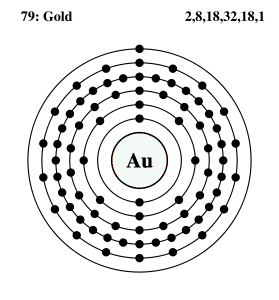The Unique Atomic Electron Structure of Monetary Metals



When the average person thinks of money these days, it usually brings to mind a piece of paper with some artwork and a portrait of an important historical figure on it, along with a number to indicate the value of the paper note. The higher the number on the paper note, the more value that note has. And in our modern day monetary paradigm, this is what money is. Historically though, money was actually a commodity. And the value of the monetary commodity was directly related to the amount of that commodity. For instance, if the commodity was gold, then ten ounces of gold had ten times more value than one ounce of gold. This is different from today where one small piece of paper might have ten or one hundred times the value of another small piece of paper of the same size and weight, depending on the numbers that are printed on the paper notes in question. Historically speaking, this situation isn’t normal. Throughout history, money has usually been a commodity, usually a metal, and paper notes were sometimes issued to indicate how much of a particular metal was owed to the note bearer. This changed for good in 1971 under the direction of President Richard Nixon, when he formally broke all ties between the U.S. dollar and gold. In my humble opinion, this situation will not and cannot last forever. The world will once again return to a monetary metal standard, either willingly or unwillingly. The laws of economics demand it, as do the laws of nature itself.
I would argue that the three main monetary commodities throughout history have been gold, silver, and copper. Take a look at all the coins that have been used in exchange for goods throughout history, and you will find that these three metals are, though not exclusively used, are very predominant. Jesus Christ himself implied such in Matthew 10:9 when he told his disciples: “Do not acquire gold, or silver, or copper for your money belts”(NASB). Now, there are three interesting facts concerning these three metals that I would like the reader to consider:
1. These three metals have been historically used as money and are specifically mentioned by Jesus Christ when referring to money in the New Testament.
2. The atoms of these three metals have a similar pattern within their electron structures.
3. No other elements in nature have this pattern within their atomic electron structures.
This is interesting to consider, especially to those who have studied the concept and theory of money itself. As you may know, an atom of any element consists of a nucleus, containing protons and neutrons, surrounded by energy levels, containing electrons. In a diagram of an atom, the first energy level completely surrounds the nucleus in a circular or spherical pattern, and each successive energy level completely surrounds the previous energy level. The interesting thing about copper, silver, and gold is that they are the only natural elements that have one electron in their outermost energy level and 18 electrons in their previous energy level. Copper has 18 electrons in its third energy level, silver has 18 in its fourth, and gold has 18 in its fifth. Copper has one electron in its fourth energy level, silver has one in its fifth, and gold has one in its sixth.
Is it just a random accident or coincidence that out of 94 natural elements, only these three have this pattern? Is this pattern nature’s stamp of monetary approval?
interesting!
Thanks Neil
Fascinating
I think you’ll find that all elements in each column of the periodic table have similar electron structures to each other.
It’s next to the cool white metals column: nickel, palladium and platinum.
What you also find if that the elements in each column tend to hang out together because they are chemically similar.